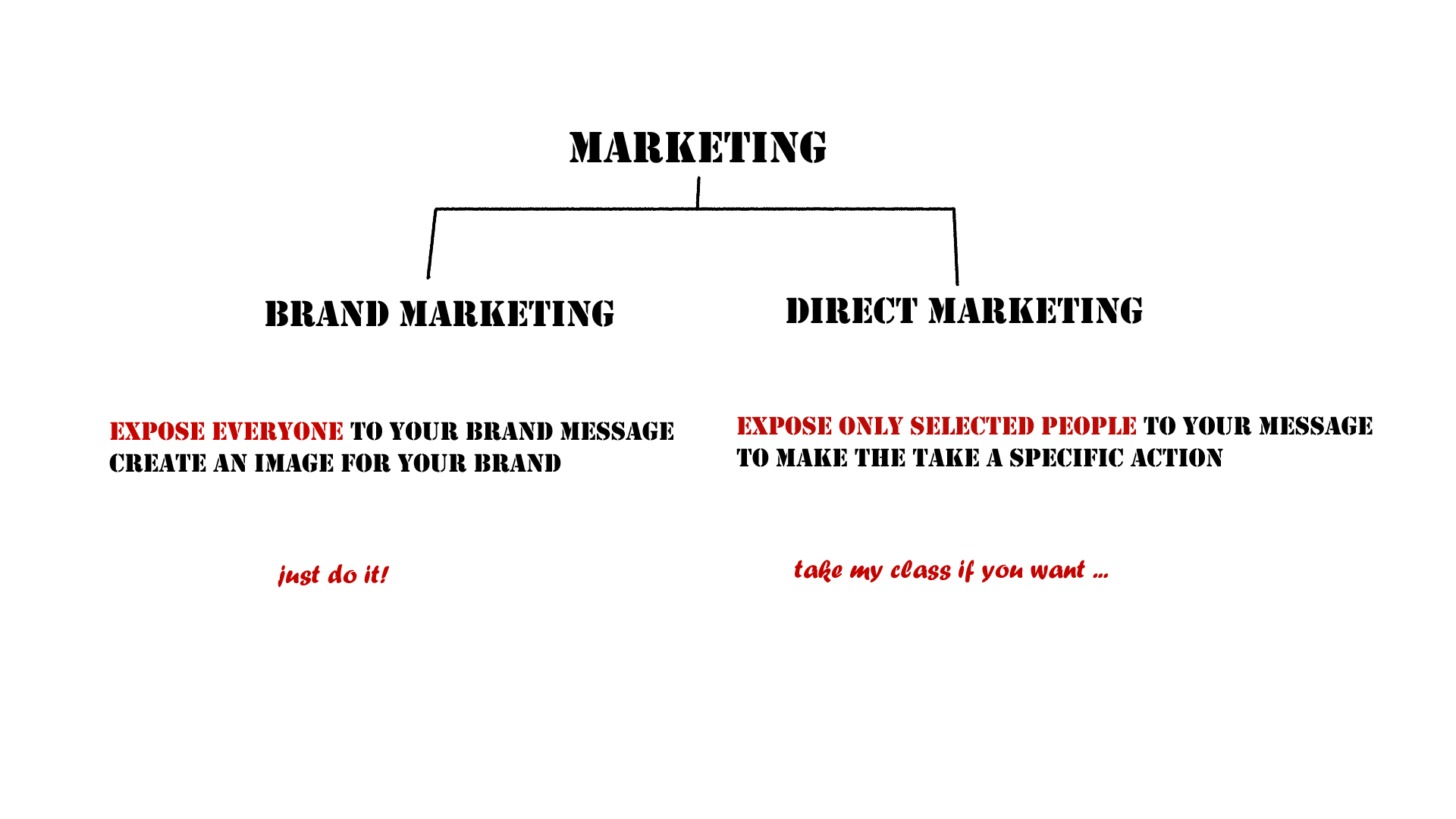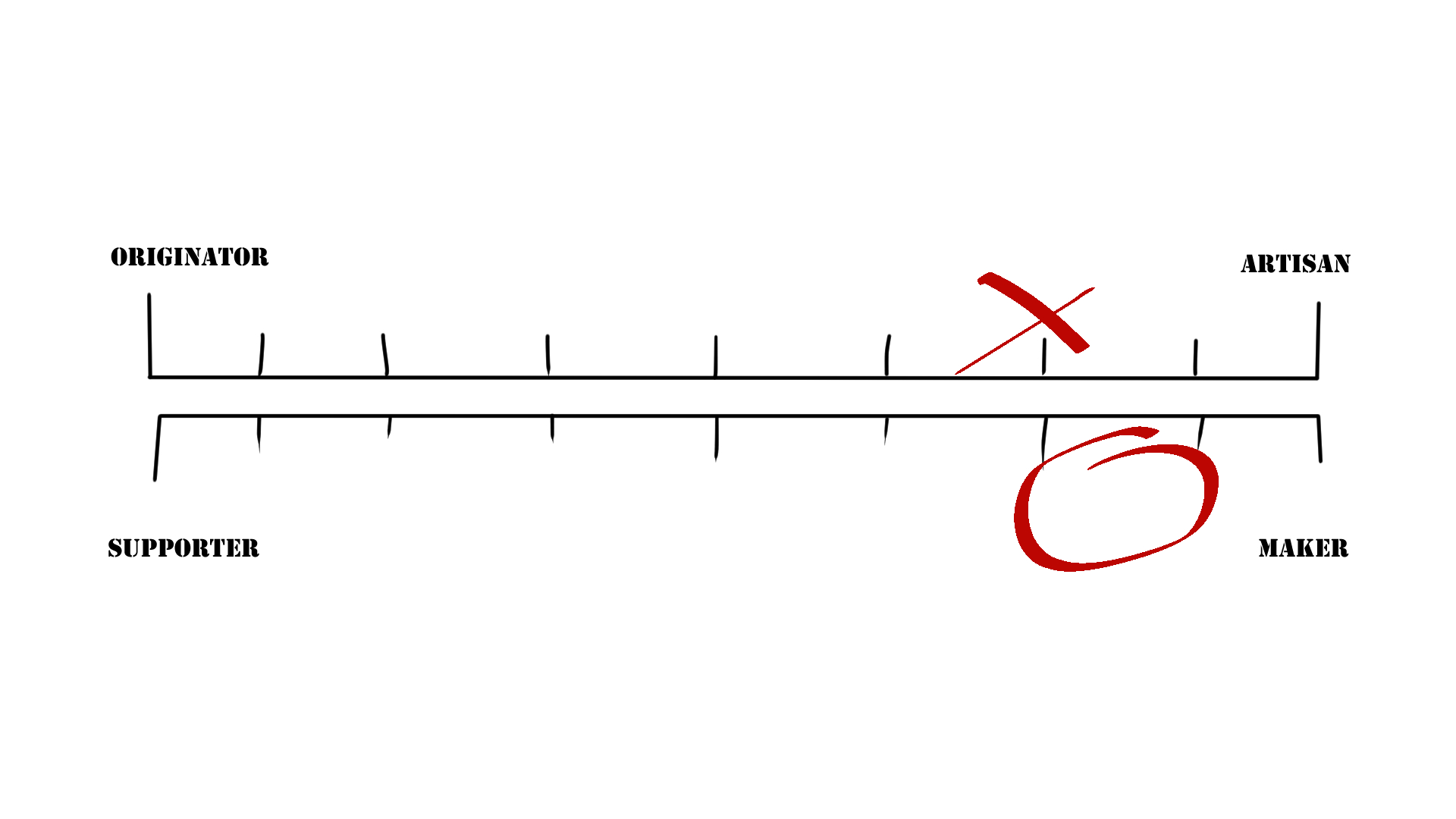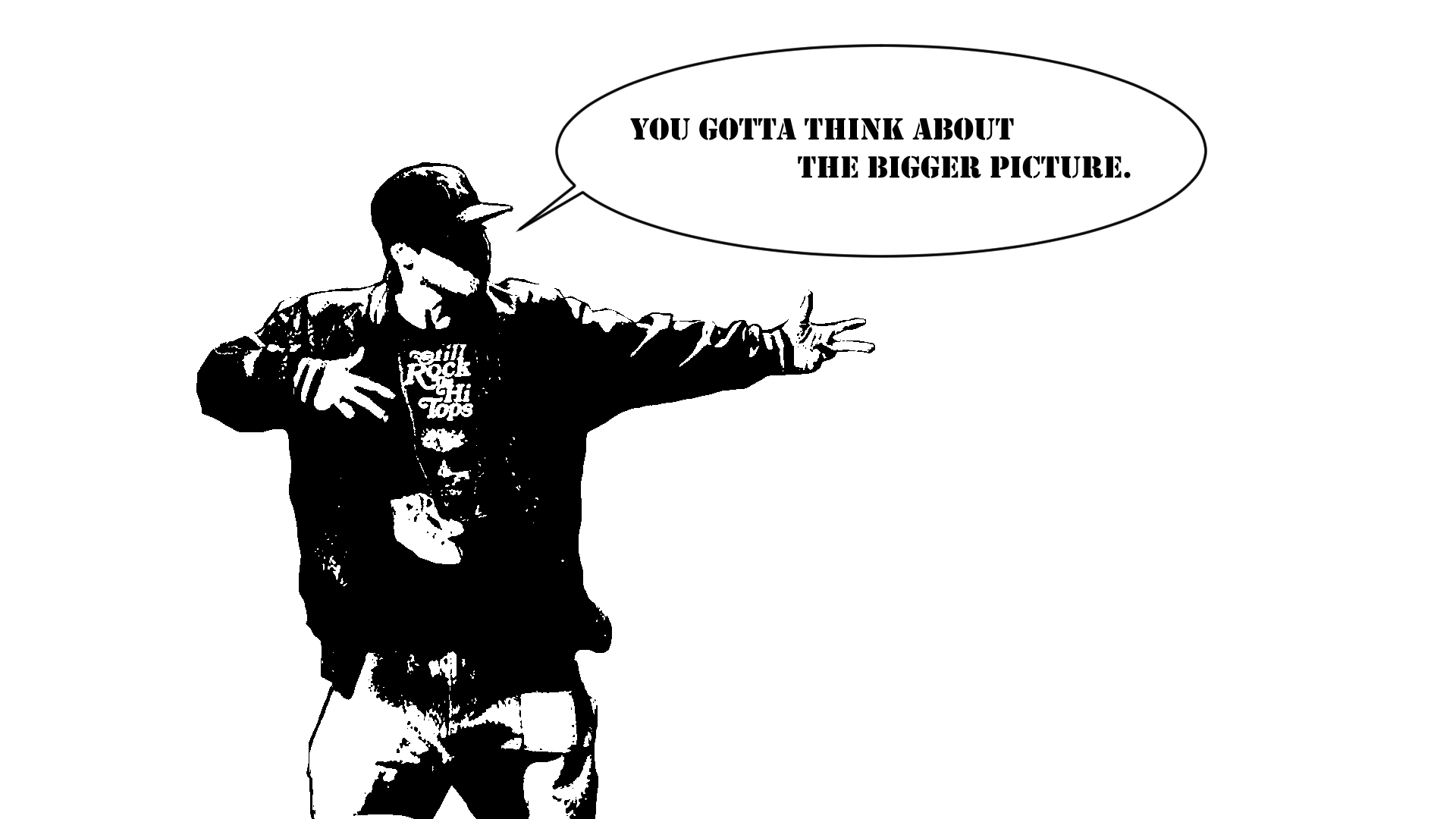When you want to kickstart your dance career or any endeavour in the dance industry, you will need some marketing. Marketing is a term that is often misinterpreted and misunderstood. I love the simple definition from Seth Godin’s blog:
If you need to persuade someone to take action, you’re doing marketing.
Seth Godin
It means whenever we try to make people take our classes, watch our work or click one of our links; we are marketing. Easy as that. In our daily dance business work, marketing is the equivalent of customer service and customer acquisition. But we hate to call it like that.
You can split it into brand marketing and direct marketing.
Brand Marketing is the way that big brands used back in the days when all the hype and the best options you had were tv ads, billboards and ads in magazines. The concept is to expose as many people to your brand message and establish an image in their minds. When you remember who is behind the slogans “connecting people” or “just do it”, you saw brand marketing at its finest in action. For some applications, brand marketing is still the way to go. For entrepreneurs like freelance dancers, it is not. The goal is brand marketing is to reach as many people as possible. As many as possible means high investment in either cash or time. We don’t have the time, and we don’t want to spend our money on people that will not support.
Direct Marketing is an approach where you try to expose only the right people to your message and ignore everyone else. Another difference to brand marketing is that you want people to do some specific, like book a class. It’s not about your image, but your offer. We are not aiming for maximum reach, but for a good percentage between people reached to people who finally accept our offer.
Some of you may already see that I talk about how we can measure our marketing success in the last sentences of the paragraphs above. We will not dive deeper into this today, but for sure later down the road – first, some more general things about marketing.
When you talk about your work to make people come and watch or participate, that is marketing. When you do it without the intention to market, it is as well.
When you post on social media, that is marketing. When other people talk about your work or post on social media, that is marketing as well. And it is free and reaches people that you won’t reach on your own.
1.000 True Fans
The best marketing you can get is still fans talking about your work. They will praise what you do and recommend you to others. They work as your free army of marketers without you getting involved. Kevin Kelly published the idea of 1.000 True Fans in 2008. It has since then become one of the most used approaches to creating a sustainable income for artists.
The basic idea behind the 1.000 True Fans is that you don’t need to become a star with millions of followers to make a decent living. What you need are 1.000 True Fans (in other places they are called Superfans) that are into your work that they will practically consume everything you release. I am not talking about Followers or Likes. True Fans would travel 300 miles to see the new piece you created. They would join a class or workshop you give. They would also buy a DVD or pay to download a movie. They would attend the events you create, and they would purchase merchandise if you had it. They also would support crowdfunding campaigns of yours because they want to see what you make of it.
Just to support the idea with numbers: when you manage to sell 50 bucks of work to 1.000 people you made 50.000. Remove half to be safe on taxes, and you still have 25.000. Most people can make a living from that, as it is over 2k per month after tax.
So the point of our marketing is to find 1.000 people who love what we do. Those 1.000 will become your stable source of income and act as recruiters for new True Fans as well as regular customers who only consume some of your work.
How will we approach to find our True Fans?
By engaging in work that is meaningful to us and sharing it with the world. Do you remember Your Bigger Picture? Your True Fans share your vision, that is why you need to know it. If you keep working on projects that play into that vision, they will follow. And they will tell others about it.
How to find those guys?
These are the marketing tools that we can utilise, but they are only the transport vehicle of our message.
- Direct Contact. It’s still #1 to find and create True Fans. People who see your work live and enjoy it are likely to check out what you do next.
- Social Media is the #2 way of connecting at the moment of this writing, but not as good for bonding with your True Fans as the next.
- #3 Your Website and Email list are often neglected since the rise of social media. The advantage of them is that they are your property. When any given social media platforms change their algorithm of presenting your content, you can not do anything about it. If they shut-down, all your contacts are gone. That is not likely to happen soon, but you never know. Social Media is also an open experience; anyone can join. For bonding purposes, it is far more effective to create an intimate and exclusive atmosphere.
Far behind those 3 are other methods like print ads, media coverage, tv shows, guerilla (or ninja) marketing ideas and everything else. There are applications where these OTHER methods can help and give your reputation a push, but they are situational. We will deal with all of the above topics in detail.
Crafting your message
No matter what vehicle we choose to transport our message, its content is what matters most. It is our promise what people can expect from us. If we can deliver on this promise, again and again, our circle will grow and eventually we will hit a thousand.
Go back to your bigger picture and think about which kind of people would share your vision. Don’t think about it as a mass of people, think about it as your one perfect fan. If you can see clearly how she ticks, what she wants from life and what she wants from you, you will know what you have to deliver.
What do you want them to do?
The second part is to find out what you want them to do, if they share your vision. In short, you want them to be part of your journey by consuming your offers. You already know what you offer from Your Dance Business Set-Up. If you missed this one, go back and read it now.



